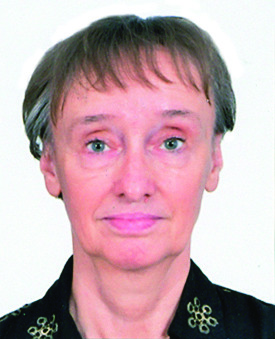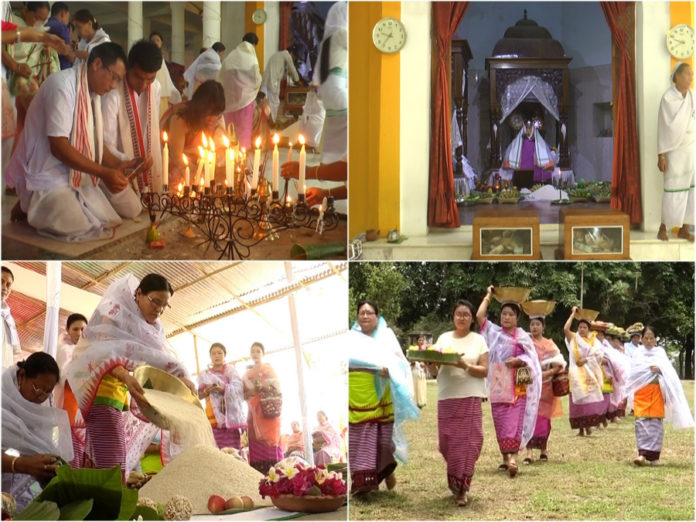The term “caste” is of western origin based on the Latin “castus” meaning pure. It was obviously created and introduced during the time when western (Portuguese, Dutch, French, British) seafarers and conquerors came to India and tried to make out and understand the society they found in India. The caste is legitimized by Hinduism social differentiation that divides the population in strictly separated hierarchical groups. Traditionally members of a caste cannot intermarry with members of other castes, they are bound to specific occupations and are limited in their interaction by rules of purity. In modern India the caste system is prohibited by law but practiced widely in urban as well as rural surroundings. The traditional Hindu social order described in English by “caste” though consists of two very different connotations, namely Varna and Jati.
Varna meaning colour in Sanskrit the highest caste having the lightest colour of skin and the lowest the darkest skin colour. Traditionally there are four varnas, with Brahmans (traditional intellectual elite having a monopoly on reading and interpreting the Vedas, priests), Kshatriya (traditionally being warlords, higher administrators, kings), Vaishyas (traders, landowners, agriculturalists) and Shudras (craftsmen, workers, landless peasants). Below these four varnas there are the Dalits (meaning suppressed) who again are divided into many groups with different social standings but mostly considered “achut” (untouchable) by the upper four varnas.
Jati (meaning born or by birth) is a kind of occupational group. There are thousands of jatis in India that often have local or regional connotation. Each jati is supposed to belong to a certain varna but not list or schedule for that exists or has ever existed. A person is born into a jati, has to live his or her life within that jati with no (and even today hardly any) possibility to improve the social status by exiting one and entering a higher jati. A jati is thus a kind of extended family system or clan that is sharing not only an occupation, but tradition, culture, values and common ancestors. Each jati is ruled by a group of elders that decide controversies that may arise in different questions of daily life.
Varnas are of ancient origin. They are mentioned first at the time of the Rigveda about 1500 BC. At first two varnas were mentioned in the ancient texts the light-coloured ones and the dark coloured ones. The Aryan population that around 3000 BC came to the subcontinent from Asia belonged to the Indo-Aryan group of people that included Caucasians and Europeans. When these Aryans entered they found the subcontinent inhabited by an indigenous tribal population of dark skin colour, we can therefore conclude the differentiation was between immigrants and indigenous population. Only in later texts the light varna is mentioned to be divided into three groups brahmans, kshatriyas and vaishyas. Shudra seems to have become the varna of the dark coloured. Latest genetic research has established that 4200 years ago there was no contact restriction between the varnas and a mixing took place resulting in the darkening of the colour of some and the lightening of others. Only about 1900 years ago the mixing stopped, contact and marriage restrictions were put in place. Coming from the north the Aryan immigrants proceeded only slowly east and south, reaching southern India much later when contact was already restricted. The result was that in South India the original population kept their relatively darker skin colour.

With contact restrictions staying in place until today, the occupational preferences have almost vanished. Under British rule the Brahmans lost their monopoly to read the Vedas when the British founded educational institutions that were open to all. When the Sanskrit College was founded in Calcutta in 1824, where students could study Sanskrit. That opened the way to read the Vedas. In addition, European scholars started reading, translating and editing the Vedas to that the scriptures became available to all. The performance of Vedic rituals, one of the core occupations of Brahmans, also became rare and that is why we read already in the 19th century. about poor Brahmans in need to go for jobs in the colonial administrative service or educational institutions. There they has to compete with people from other varnas that had passed college and started applying for jobs. Today one can find Brahmans working as cooks in good restaurants because many of the rich higher caste guests do not want to eat food cooked by a lower caste person. Reversely, representatives of lower varnas in modern day India can reach good positions in social life, join politics and grow rich as an entrepreneur. K. R. Narayanan was the first President of India from 1997 to 2002 who was born an “Untouchable”; still that may not have opened him the doors to marriage into a varna family. Usually, the varna or even jati can be established by the name of a person. Sharma and Banerji are typical Brahman names, other names disclose the belonging of a person to other varnas or to untouchables. For marriage, of course, a thorough investigation is conducted so as to find a bride from the right varna or jati. Marrying into a lower caste would result in losing one’s higher caste status!
For the hierarchy in Hindu society the idea of purity is important. Certain occupations until today are considered impure, such as leather workers, barbers, dhobis, people dealing with garbage. To keep their purity higher varnas and jatis try to keep away from lower ones, for instance they avoid using the same crockery as the servants. In modern life this is not always possible, especially in urban areas we don’t know the name and the social status of people we meet.
Despite the prohibition of caste-related disadvantages in the Indian Constitution these thousands of years old customs and beliefs survive and erode only very slowly. The category of “scheduled castes and tribes” reserves seats in educational institutions and jobs in the administration, those try to smoothen out the social injustice but cannot do away with it.
An interesting fact that can be observed in Pakistan as well is that ideas of purity and caste have been incorporated into other religious communities as well. While one reason for conversion of low-caste or untouchable people to Christianity or Islam may have been to escape the inequality of the Hindu caste system, today we can see that this did not happen. The centuries-long co-habitation of Muslims and Hindus, for instance, has resulted in the adoption of ideas of purity/ impurity among Muslims. Trying to find a white-skinned bride, keeping a separate, often metal drinking glass for servants and incoming labourers is common in Pakistan. Even marriage partners are more often than not chosen according to biradri or clan belonging. In Sri Lanka, these ideas of inequality have been adopted even among the Buddhist population. Islam, Christianity and Buddhism all uphold notions of basic equality of men, but co-habitation with Hinduism over long time have brought these changes.
Contributed by:

Dr. Bettina Robotka, former Professor of South Asian Studies, Humboldt University, Berlin, Editor of the Defence Journal and a Consultant to the Pathfinder Group).





